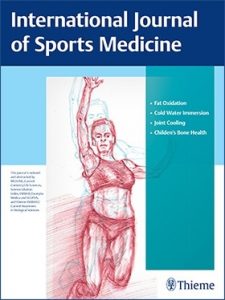Publications

Effects of myofascial exercises on instep kick biomechanics and myofascial elasticity
Authors: Volkan Deniz 1, Aleyna Isik 2, Abdullah Kilci 3, Inci Kesilmis 4
Affiliations:
- Physiotherapy and Rehabilitation, Tarsus University, Tarsus, Turkey
- Physical Education and Sports, Mersin University, Mersin, Turkey
- Faculty of Sports Sciences, Cukurova University, Adana, Turkey
- Department of Coaching Education, Mersin University, Mersin, Turkey
Journal: International Journal of Sports Medicine - October 2025 (DOI: 10.1055/a-2722-7468)
-
Field & Applications:
- Sport
- Muscle development / Performance
This study aimed to investigate the effects of an anterior superficial myofascial chain strengthening program on maximum ball speed, myofascial elasticity, muscle activation, and shank kinematics in young soccer players.
A total of 32 licensed soccer players, aged 13-14 years, were recruited and randomly assigned to either an exercise group or a control group. Participants in the exercise group underwent an eight-week anterior superficial myofascial chain strengthening program consisting of three progressive phases. At baseline and after the eight-week intervention, maximum ball speed during the instep kick was measured using a radar gun; muscle activation was assessed via surface electromyography; and shank rotational velocity and acceleration were recorded using an inertial measurement unit. Myofascial elasticity was evaluated using a myotonometer.
Compared to the control group, the exercise group demonstrated significant improvements in maximum ball speed, muscle activation, and myofascial elasticity. However, no significant changes were observed in shank rotational velocities or accelerations. Correlation analysis revealed that changes in maximum ball speed were significantly associated with alterations in muscle activation and myofascial elasticity.
Anterior superficial myofascial chain strengthening program increases the maximum ball velocity during instep kick in young soccer players by improving muscle activation and myofascial elasticity.
In conclusion, this study demonstrated that ASMC training significantly improved ball velocity in soccer players. This improvement was associated with increased myofascial elasticity and elevated activation levels of the RA and RF muscles. However, no significant changes were observed in shank rotational velocity and acceleration. This outcome may indicate that the variables of the applied training method were insufficient to influence these specific parameters. Future research should investigate whether modifications of these training variables – along with adjustments in program duration, frequency, and intensity – could lead to more pronounced kinematic adaptations.


